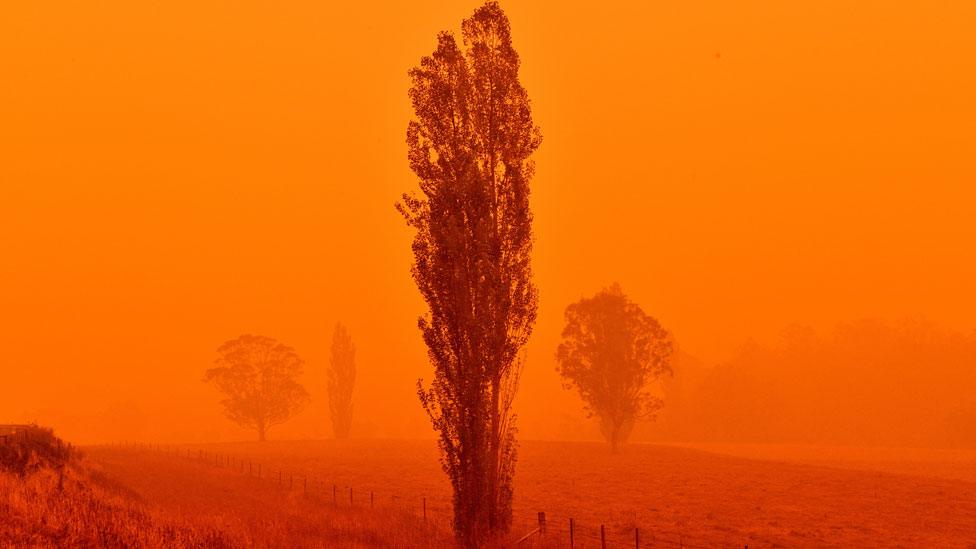Heat stress and the Australian flying fox
- Published
In December, Australia recorded its hottest day, during a period of prolonged drought in parts of the country.
The hot weather, drought and associated bushfires that have swept though southern and eastern Australia have affected native wildlife.
The grey-headed flying fox, a large bat inhabiting the south-eastern forested regions of Australia, is one species which is being adversely affected. It is already listed as vulnerable on the International Union for Conservation of Nature Red List of threatened species, and is especially susceptible to hotter conditions.
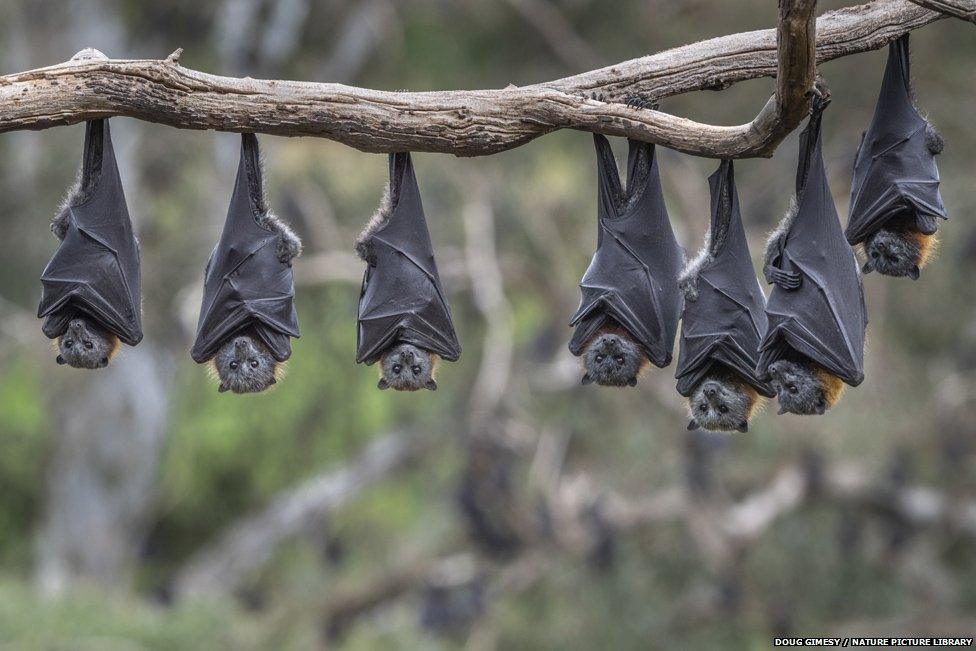
The flying fox is a key species in the forest ecosystem of Australia, involved with seed dispersal and pollination of native tree species.
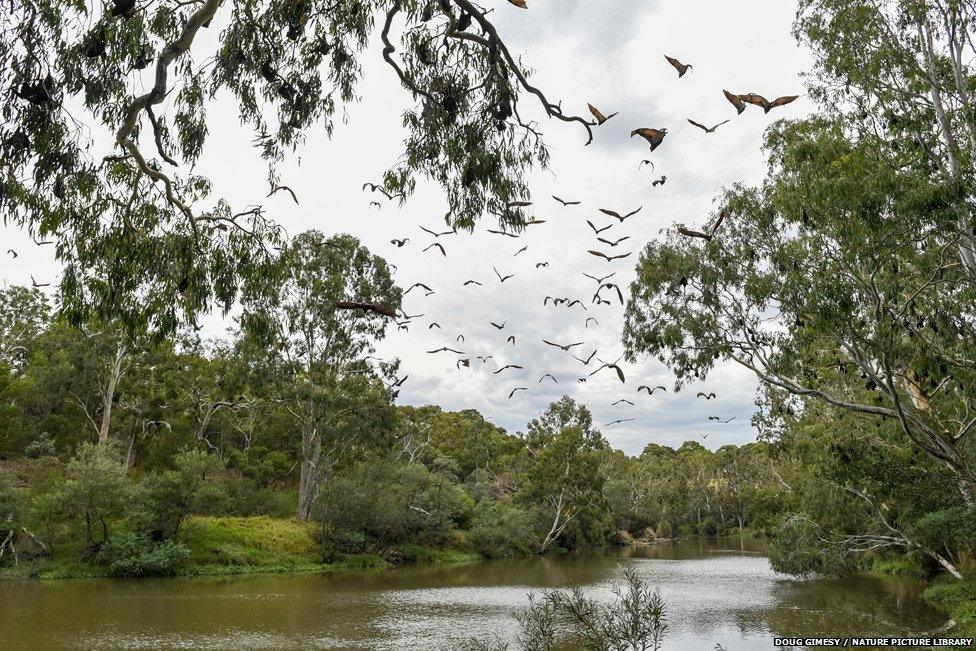
Over three days in late December 2019, about 4,500 grey-headed flying foxes died in Yarra Bend Park in Victoria during the record-breaking temperatures that hit Australia that month.
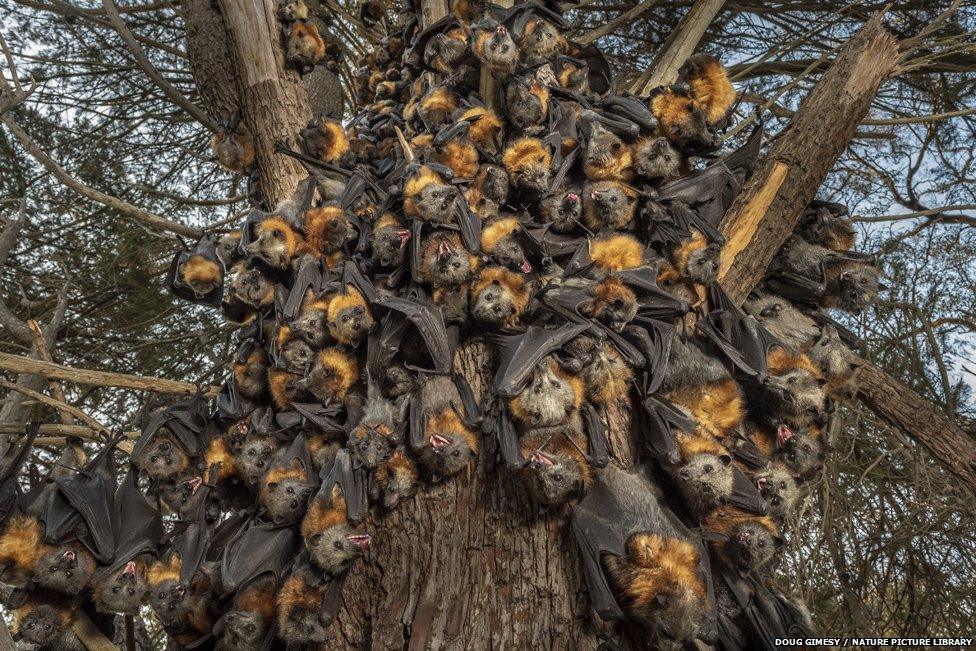
The animals respond to extreme heat by "clumping", trying to avoid the heat in the canopy branches by gathering together on the cooler shady side of trees. Unfortunately this behaviour causes excess body heat.
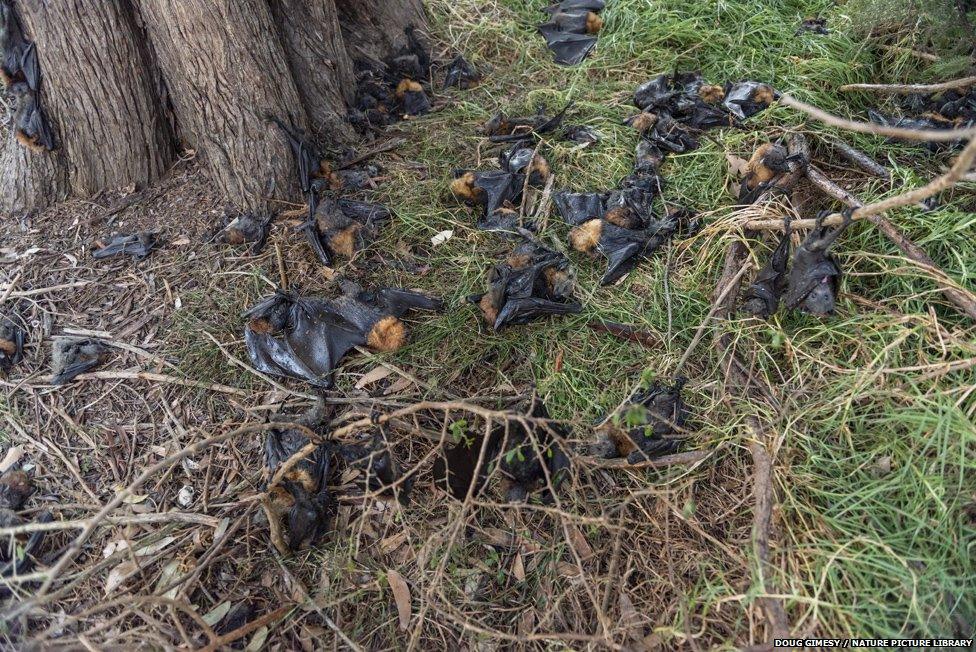
The animals become too exhausted to move, they fall to the ground on top of each other and suffocate in a cascade effect.
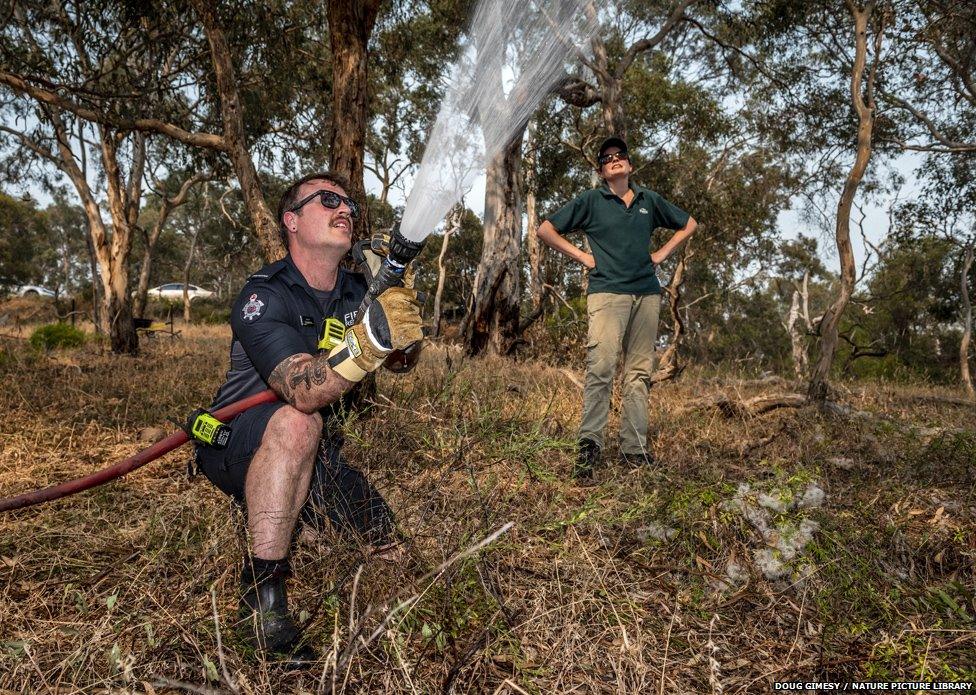
Efforts have been made to reduce the heat stress on the animals. A firefighter from the Melbourne Fire Brigade sprays water in an attempt to keep the colonies cool.
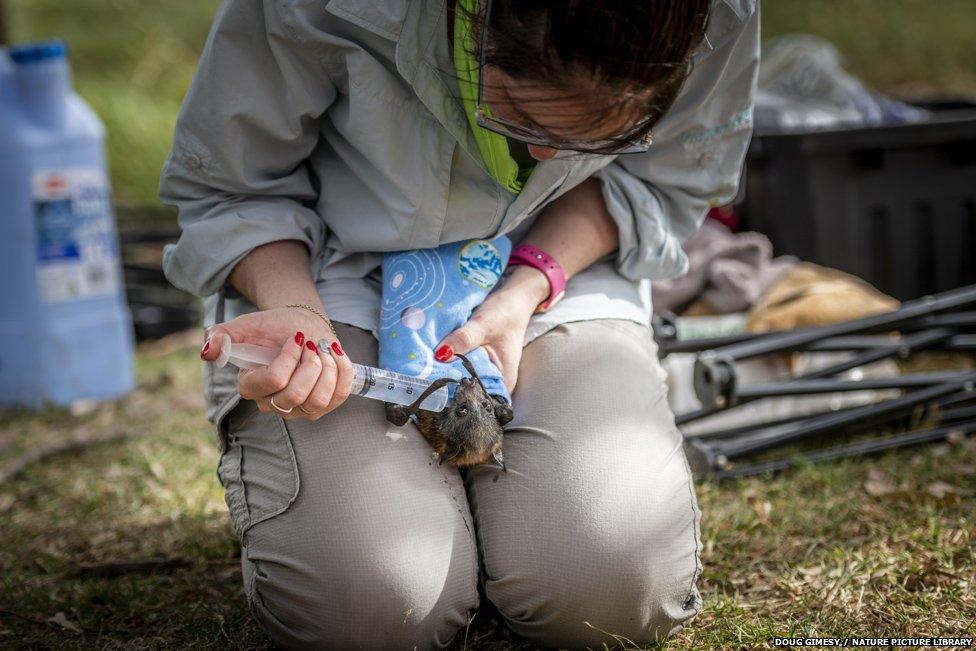
Local wildlife rescuer Kate Chamberlain attends to a suffering flying fox by providing cool fluids.

Tamsyn Hogarth, founder of a local wildlife shelter, comforts a young rescued flying fox.

Park rangers collected more than 1,500 flying fox carcasses, estimated to be one-third that died in the three-day hot weather spike.
So many carcasses were collected that the rangers ran out of bins and had to resort to using plastic bags. These were then scavenged by predators.

This recent spike in temperature is estimated to have killed one-tenth of the local population of flying foxes and at least 50% have been infant animals, limiting the ability for the population to recover in the region.
Though the Yarra Park region was not heavily affected by the recent bushfires, the flying foxes' other habitats along the east coast have been. The Australian authorities estimate that up to 30% of their habitat range has burnt, and it is unclear what all this means for the species in the long term.
All photographs copyright Doug Gimesy / Nature Picture Library
- Published22 January 2020
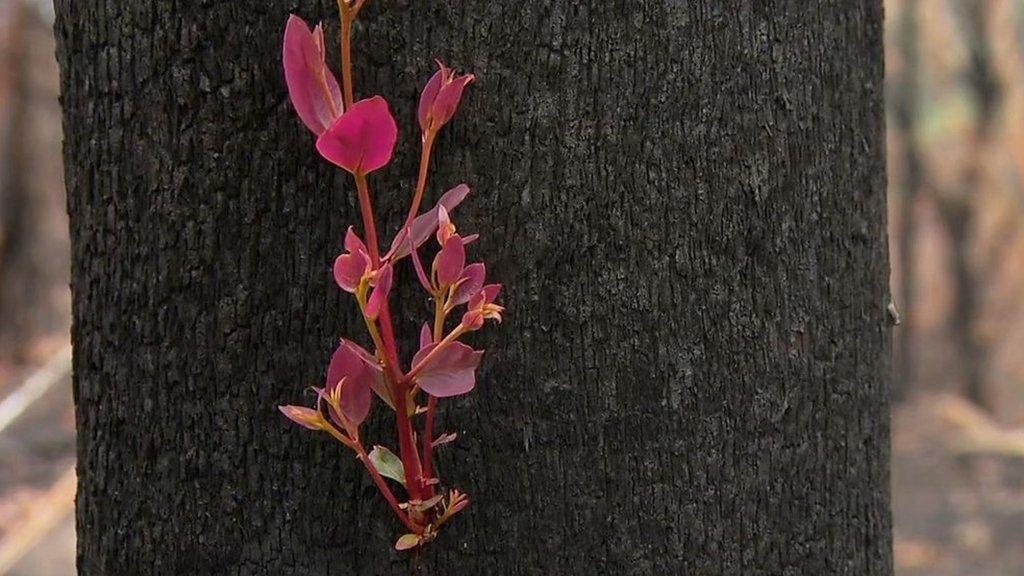
- Published31 January 2020
